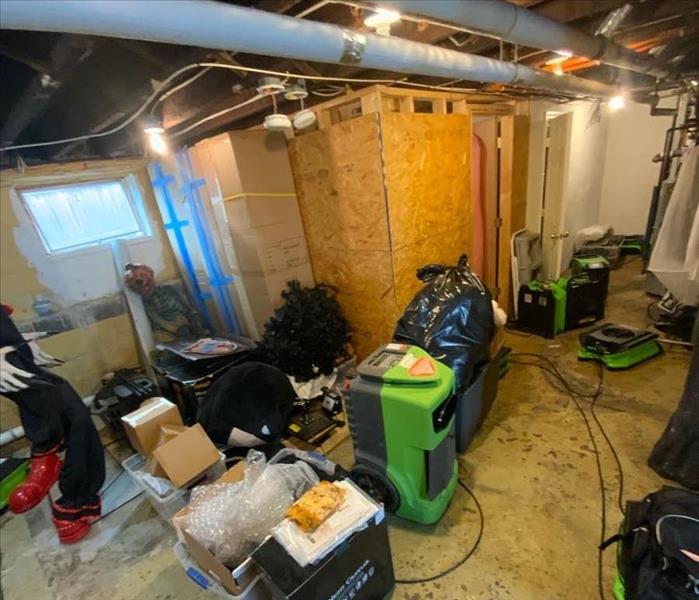Monitoring Dry-Out Progress: Key Metrics for Effective Water Damage Restoration
6/11/2024 (Permalink)
In the aftermath of water damage, monitoring the dry-out process is crucial for successful restoration. At SERVPRO®, we employ a range of metrics to assess progress and ensure thorough drying after the initial response. Here's a closer look at the key metrics we use:
1. Moisture Levels:
Moisture Meters: Our technicians use moisture meters to measure the moisture content of affected materials, such as walls, floors, and ceilings. By tracking moisture levels over time, we can determine if drying goals are being met and adjust our strategies accordingly.
Infrared Cameras: Infrared cameras help us identify hidden pockets of moisture that may not be visible to the naked eye. This allows for targeted drying efforts to ensure complete moisture removal.
2. Humidity Levels:
- Hygrometers: Hygrometers measure relative humidity levels in the air. We aim to maintain optimal humidity levels during the drying process to facilitate evaporation and prevent secondary damage, such as mold growth.
3. Temperature:
- Thermometers: Monitoring temperature is essential for promoting efficient drying. Warmer temperatures accelerate the drying process by increasing the rate of evaporation.
4. Drying Progress Documentation:
- Daily Logs: We maintain detailed logs documenting the progress of the drying process. These logs include measurements of moisture levels, humidity, and temperature, as well as observations on the condition of affected materials.
5. Psychrometry:
- Psychrometric Calculations: Using psychrometric calculations, we analyze the relationship between temperature, humidity, and moisture content to optimize drying conditions and achieve faster results.
6. Visual Inspection:
- Visual Assessment: Regular visual inspections allow us to assess the condition of materials and identify any signs of residual moisture or potential issues that may require additional attention.
7. Customer Feedback:
- Communication: We prioritize open communication with our customers throughout the drying process. Customer feedback and observations are valuable indicators of progress and help us tailor our approach to meet their specific needs and expectations.
Conclusion:
Effective monitoring of the dry-out process is essential for successful water damage restoration. By utilizing a combination of metrics, including moisture levels, humidity, temperature, and visual inspections, along with ongoing communication with customers, SERVPRO ensures thorough drying and optimal restoration outcomes. Trust SERVPRO for comprehensive water damage restoration services backed by advanced technology and expertise.

 24/7 Emergency Service
24/7 Emergency Service
